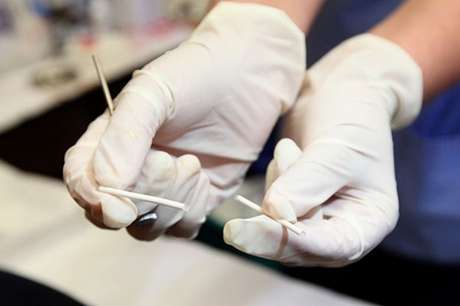Subdermal Contraceptive Implants: An Overview


Reviewed and approved by the doctor Gilberto Adaulfo Sánchez Abreu
Currently, there are many different contraceptive methods available that let you choose when, how, and with whom to have a child. One of these options is subdermal contraceptive implants.
Although times have changed, there’s still plenty of ignorance and myths about the effects that this form of contraception has on women.
While there has been a lot of effort to educate people on the details of all these alternatives, doubts are still prevalent. Find out everything you need to know about subdermal contraceptive implants.
Indeed, subdermal contraceptive implants are a lesser-known contraceptive method. As such, some may not trust them as much as they should.
We’ll tell you about how they work, their side effects, as well as their advantages and disadvantages.
What are subdermal contraceptive implants?

Their effects vary depending on your body weight, and they don’t contain estrogen, only progestin.
The thin rod that is placed under the skin continuously releases a hormone that disrupts the normal function of the ovaries. It also produces a cervical mucus that blocks sperm.
How are hormonal implants inserted?
The insertion of the rod is very fast and doesn’t require any recovery time. Further, the insertion takes place with local anesthesia during the first days of your period.
A specialist should insert it in an authorized clinic after a routine evaluation to look over your health.
After three years, they’ll have to replace it with a new one since they lose their effectiveness over time.
Don’t forget to read: How to relieve menstrual cramps
How effective is it?
The statistics about the effectiveness of this contraceptive method are very encouraging.
Nevertheless, keep in mind that it can’t prevent sexually transmitted infections. As such, the use of a condom is essential.
Who can use it?

What are the advantages of these implants?
Their use has seen an increase in recent years since they offer many advantages:
- They’re 99% safe, simple, and convenient.
- They’re discreet, and only the woman is aware that she has it.
- You can quickly become pregnant after its removal.
- They can be used while breastfeeding.
- You don’t have to remember to take a pill every day.
- They’re a continuous and long-lasting contraception method. Also, they’re an alternative to sterilization.
What are the disadvantages of contraceptive implants?

For the majority of women, the contraceptive implant causes some side effects while their body adapts to it.
However, they tend to disappear with time and don’t present a danger to your health.
Still, some women may have unwanted side effects, which may be a sign that they’re not the most suitable for their body.
The most common side effects include:
- Irregular bleeding during the first 6–12 months of use
- Long and heavy menstrual periods
- Spotting or mild bleeding between periods
- Changes in sexual desire
- Scarring at the insertion site
- Headaches
- Nausea and fatigue
- Pain at the insertion site
- Breast tenderness
When and how do you remove the implant?

A healthcare specialist will numb the area with a local anesthetic, make a tiny incision, and extract the rod.
This procedure only takes a few minutes, although that’s a little longer than the time it takes to insert.
If you wish, a new implant can be replaced at that time; otherwise, you may become pregnant.
Want to know more? Read: Can You Still Get Pregnant With a Progestin Implant?
Where can you get a subdermal contraceptive implant?
To get an implant, it’s important that you first talk to your doctor about its pros and cons.
Further, the insertion of the rod should be performed under strict care, always in the hands of an expert at a licensed clinic.
So, are you interested? Talk with a specialist you trust, clear any doubts, and make a decision based on the results of your check-up.
All cited sources were thoroughly reviewed by our team to ensure their quality, reliability, currency, and validity. The bibliography of this article was considered reliable and of academic or scientific accuracy.
- Jabbour, H. N., Kelly, R. W., Fraser, H. M., & Critchley, H. O. D. (2006). Endocrine regulation of menstruation. Endocrine Reviews. https://doi.org/10.1210/er.2004-0021
- Peralta, O., Diaz, S., & Croxatto, H. (1995). Subdermal contraceptive implants. Journal of Steroid Biochemistry and Molecular Biology. https://doi.org/10.1016/0960-0760(95)00051-Z
- Coukell, A. J., & Balfour, J. A. (1998). Levonorgestrel subdermal implants. A review of contraceptive efficacy and acceptability. Drugs. https://doi.org/10.2165/00003495-199855060-00019
This text is provided for informational purposes only and does not replace consultation with a professional. If in doubt, consult your specialist.








